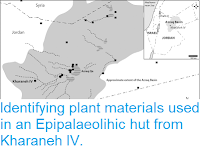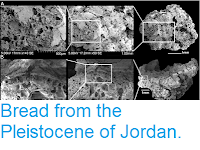The city of Gerasa in northern Jordan is thought to have been inhabited from the first century BC onwards, starting out as an Arab village called Garshu, and becoming an important centre during Roman times, as Gerasa, one of the ten cities of the Decapolis, which are spread across what is now northern Jordan, northern Israel, and southern Syria. The name of the settlement was later Arabised (again) to Jerash, and was eventually abandoned after being sacked by Baldwin II of Jerusalem in 1121 (a modern settlement also called Jerash in the same area was founded by the Ottomans in the sixteenth century). The ancient city was rediscovered by the German natural historian and explorer Ulrich Jasper Seetzen in 1806, and has been excavated intermittently by various groups for over two centuries. However, the recording of such explorations has been somewhat variable in nature, and while a number of maps of the area have been produced, these vary a great deal in accuracy, and are often inconsistent in naming, as many early archaeologists chose to name features in Latin, inappropriate for a Greek city of the eastern Roman Empire.
In a paper published in the journal Antiquity on 18 February 2019, Achim Lichtenberger of the Institut für Klassische Archäologie und Christliche Archäologie at the Archäologisches Museum in Münster, Rubina Raja of the Department of Classical Studies and Centre for Urban Network Evolutions at Aarhus University, and David Stott of the Unit of Archaeological Information Technology at Moesgaard Museum, present a new map of Gerasa, made as part of the Danish-German Jerash Northwest Quarter Project.
Lichtenberger et al. note that most maps of the are made during the past 80 years have been based upon a 1938 map made by the Anglo-American expedition to Gerasa, or upon other maps which were in turn based upon that map. In contrast, their new map is based upon maps made from scratch by the Danish-German Jerash Northwest Quarter Project during excavations, combined with aerial lidar data from the Royal Jordanian Geographic Society.
Map archaeological features derived from airborne lidar and archival photographyof the city of Gerasa. A large number of previously recorded and new features were recorded in the better-preserved part of the city to the west of the wadi. Hypothetical building elements are highlighted in pink. Most of the buildings on the eastern side of the valley are no longer extant. (1) Extramural arch (‘Hadrian’s Arch’). (2) Church of Bishop Marianos. (3) Hippodrome. (4) Sanctuary of Zeus Olympios. (5) South Gate. (6) Water Gate. (7) City walls. (8) Shops and structures along the South Gate street. (9) South Theatre. (10) South-East Gate (blocked). (11) Procopius Church. (12) ‘Oval Piazza’. (13) Roman house or church. (14) ‘Camp Hill’ (location of modern museum). (15) Byzantine villa. (16) Agora (‘Macellum’). (17) Area of the House of the Blues. (18) South Bridge. (19) Possible South-West Aqueduct. (20) East Baths. (21) Mortuary Church. (22) Late Antique and Early Islamic structures. (23) South Tetrapylon. (24) Church of Sts Peter and Paul. (25) Side street (‘South Decumanus’). (26) Mosque. (27) Main Street (‘cardo’). (28) Early Islamic domestic quarter. (29) Cathedral complex. (30) ‘Temple C’. (31) Church of St Theodore and Fountain Court. (32) Nymphaion. (33) Buildings west of the Wadi. (34) Small Eastern Baths. (35) Chapel of Elia, Mary and Soreg. (36) South-West Gate. (37) Churches of Sts George, John, Cosmas and Damian. (38) Approximate location of ‘House of the Poets and Muses’. (39) Ecclesiastic complexes and Baths of Placcus. (40) Propylaea Church. (41) Church of Bishop Genesius. (42) Ottoman House. (43) West Baths. (44) Large rock-cut cistern. (45) Sanctuary of Artemis. (46) North Theatre. (47) Spring (Ain Karawan). (48) Synagogue/Church of the Electi Iustiniani. (49) Church of Bishop Isaiah. (50) Side street (‘North Decumanus’). (51) North Tetrapylon. (52) Hall of the Electi Iustiniani. (53) Umayyad houses. (54) Middle Islamic hamlet (and large courtyard). (55) Church of the Prophets, Apostles and Martyrs. (56) Large open area (‘forum’) and basilica. (57) Roman edifice and cistern. (58) Middle Islamic structures. (59) Circassian house. (60) North-West Aqueduct. (61) Early modern water channel. (62) North Gate. (63) Chrysorrhoas/Wadi Jerash. Lichtenberger et al. (2019).
See also...
Follow Sciency Thoughts on Facebook.







